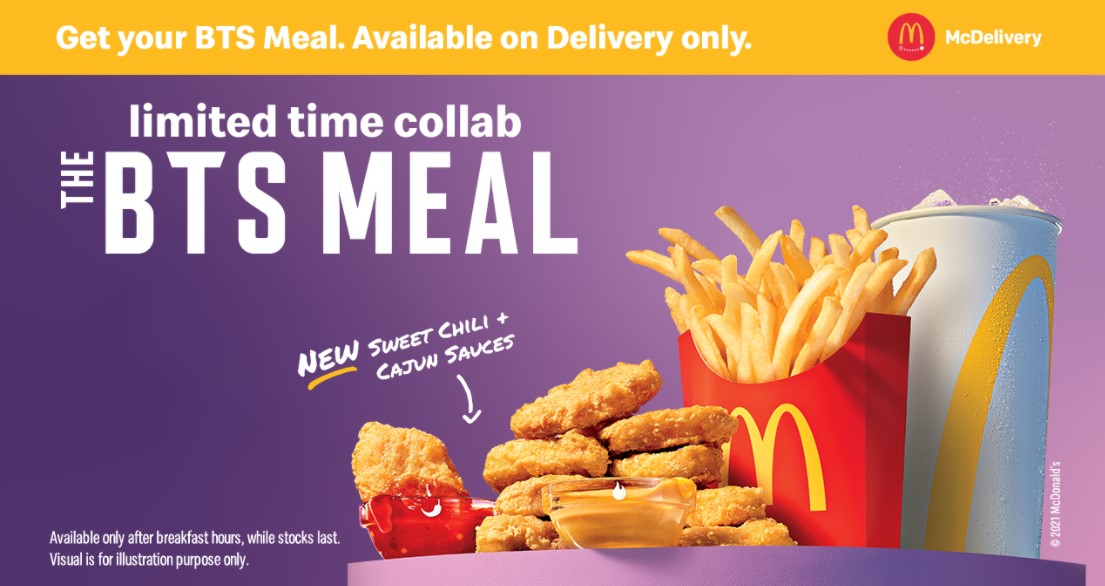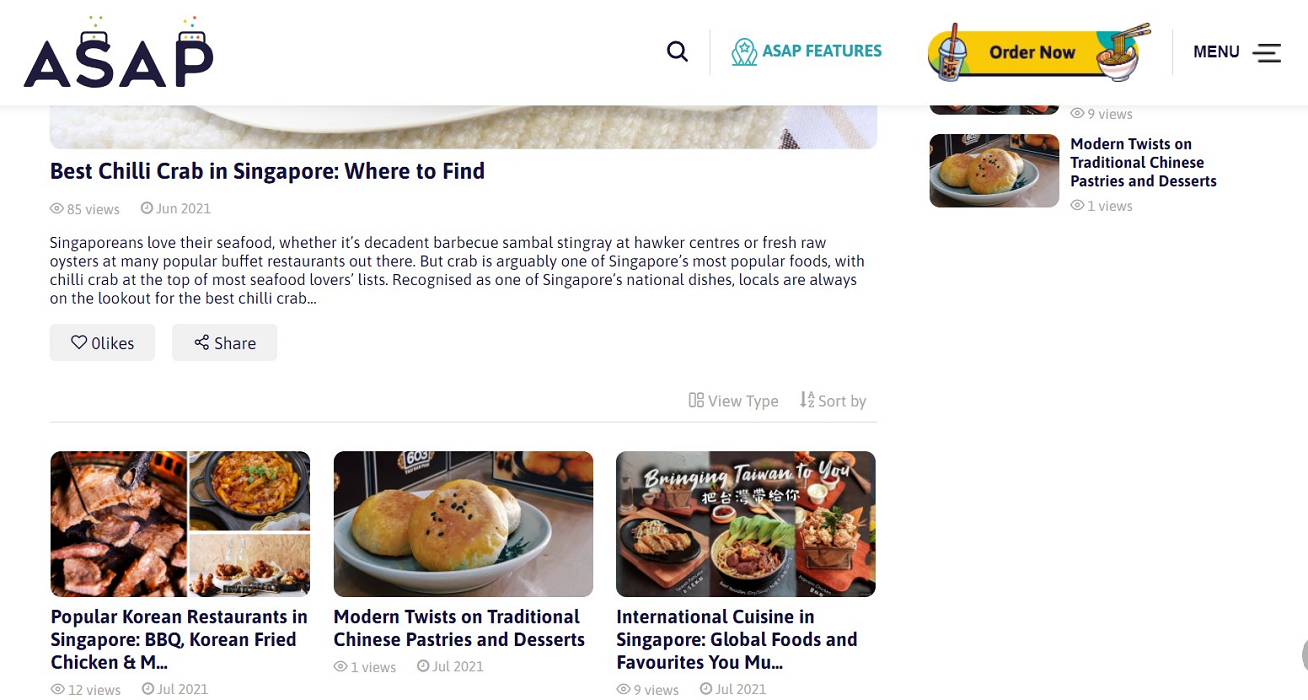
SINGAPORE – In our previous post, we discussed outreach strategies to help you grow your business during the Covid19 pandemic, with methods such as forum-posting, writing relevant content to draw visitors, and running social media ads. In this post, we will be touching on the second step of the game plan, which is equally important to outreach – in fact possibly more important.
Welcome to branding your business 101 – where the goal is to have your customer willingly associate themselves with your brand – in persona, values, and identity. Brand loyalty is a powerful tool – customers are much more willing to make multiple purchases for your products and services every time a new product is released.
One example is the BTS brand, which collaborated with McDonalds recently for the BTS meal.
Source: McDonalds Singapore
So how do we grow a league of brand loyalists from a fresh audience?
#1: Appeal to not just the logical, but the emotional
The very idea of branding falls on this point. In a crowded marketplace full of vendors who can provide the same service as you, one cannot simply compete in terms of price. Imagine in a market of chicken rice sellers who all sell their chicken rice for $3, the one who sells for $2.50 would immediately win over the hungry diner. However, this is not the way to go about, as lowering prices will only harm business owners in the long run, and everyone loses profits.
Instead, position your business as being different from the others. Use a unique selling point to set yourself apart from the rest. It could be as simple as having a friendly cashier to ask customers how their day is, or even offering free napkins for diners. This could even be creating an air-conditioned setting for dinners to dine in, or offering side dishes alongside the main chicken rice dish. An example here are premium chicken rice shops, which give you a premium dining experience, as compared to dining at a hawker centre. While nothing much about the original chicken rice has changed, marketing chicken rice with a great dining experience is enough to justify one’s business as being different from the other chicken rice sellers out there.
Source: Pixabay | Adding blueberries to chicken rice counts as branding too
Another case of appealing to the emotional aspect is the oft-mentioned case study of Apple, the smartphone brand. Apple has positioned themselves synonymous with luxury and innovation, to the extent where they have fans who flock and queue up just to be the first to purchase new product releases by the brand. This is despite the large playing field of smartphone brands now, which can rival Apple in various phone specifications such as processing speed, camera quality, and stylishness. This shows that if you successfully brand yourself first, it can take years of work to get consumers to consider alternatives to your product or service. For Apple’s case, developments such as its growing phone prices, an unpopular ecosystem model, and phone shelf life possibly contributed to consumers shifting away as well.
#2: Maintain high product quality and service standards
Source: Pixabay | Apple Macbook & iPhone, products known for high quality
Besides successfully branding your business and standing out from the rest, one of the foundations of a successful brand is to deliver, if not overdeliver, in product quality and service standards. Consumers will already expect a minimum level of service and quality, but going beyond expectations will set a great impression in consumers’ minds.
In Apple’s case, it exceeded consumers’ expectations with its IOS platform in the 2010s which overdelivered in user experience and simplicity of use. The iPhone not only looked stylish, but was also great to use. The iPhone’s competitors back then were tech-focused companies whose mobile devices were either unfriendly or average at best. It was even said that Zen Buddhism concepts guided Steve Jobs’ emphasis on simplicity and efficiency.
Lastly, in an age where news spreads rapidly, maintaining a positive brand image requires not only effort, but also honesty on the owner’s part. This means choosing to bite the bullet if an negative incident occurs, rather than try to cover it up. Netizens today not only commentate, but also investigate and compare to deduce what kind of brand quality you are. In an age where social media amplifies consumers’ opinions, maintaining a brand image has only gotten more difficult.
#3: Reward them for sticking with your brand
By now, if you are lucky, you would have developed a following for your brand’s products, and have some customers who make repeat purchases from your business. Whether you are a chicken rice seller or a retail shop owner, it is good to consider reward systems that will encourage people to continue patronising you.
Here are 2 reward systems that you can reward your repeat customers with:
- Membership
- Rebate System
The great part about establishing a rebate system with an online business, is that there are many eCommerce platforms that allows you to create a business profile and to implement various shop options, such as coupon systems, out of stock toggle, rebate systems. For instance, Shopee and Lazada allow merchants to give consumers discounts if they order more than a certain amount. On a website platforms, WooCommerce and OpenCart are common eCommerce platforms used.
While having your own business listing on a shopping app is great, you should realise you are not 100% in control of your own marketing. While you can decide on simple rebate systems, you are not able to expand on other forms of marketing (Facebook Live, tie-ins with other vendors). To stay ahead of the competition, consider a platform that is able to accommodate your business, branding and marketing, all in one. Add Salt Add Pepper by FirstCom Solutions allows clients of FirstCom’s eCommerce projects to open an eCommerce store, have control over their branding, and reward customers via customised rebates and rewards systems.
Source: ASAP Website
While there are many aspects of branding that are out there, such as logo design, colour usage, the look and feel of the brand, using mascots, etc; what we hope to present to you is more in broad strokes the direction to go if you are to brand your business successfully during this pandemic.
Stay tuned to our next and final part, where we will show you how to ensure your organic web presence!





